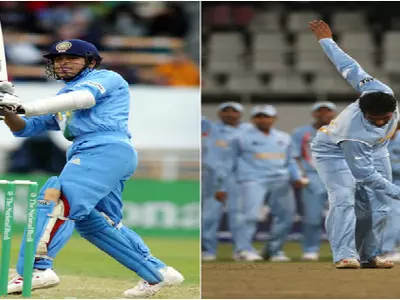9 Smashingly Unsuccessful Cricket Experiments In History

The ICC have introduced many new rules, including doing away with the batting powerplay and bringing in the Pink Ball. However, every cricket experiment in the past has not met with success. There were many disastrous results in the past, so it will be interesting to see how these new experiments works. Here are 9 Biggest experimental fails in cricket history we have picked :
1. Super Sub

NDTV
The concept of Super Substitute/Tactical Substitute was introduced in 2005, in which each team can have one substitute player who had to be named before the toss and can be brought at any stage of the game. Super Sub is different from 12th man, he can bowl, bat, field and can do wicket keeping unlike 12th man. This change was criticized by the captains as the team who wins toss gets the greater advantage. In 2006 after protest by the players this rule was withdrawn by the ICC.
2. Super Max

This was the Precusor to T20 cricket, invented in New Zealand. Super Max International Cricket had interesting rules like:
# Both teams had to play 2 innings of 10 overs each.
# Wides scored two runs in the format instead of one
# If a shot hit the Max Zone the score would be doubled.
# In the first version, it included usage of 4 stumps instead of 3.
In 2002, India played New Zealand in this format and lost by 13 runs.
#3 Bowl Out

espncricinfo
The bowl out was used as a tie breaker for the first time between New Zealand and West Indies on February 2006. Each side got 5 attempts to hit the unprotected wicket. New Zealand had won the first bowl-out. Memorably, during the 2007 World Twenty20, India won 3-0 in the bowl out against Pakistan in Durban. However, this tie-breaker proved to be unpopular and in 2008, the method was replaced by the Super Over.
4. Rain Rule

espncricinfo
In the 1992 World Cup, the organising committee came up with a new rule for the interruption in game due to rains. The new rule, called as the Rain Rule, stated that for every over lost, the target would get reduced by the lowest-scoring over from the first innings. This rule was introduced as the organisers felt that the earlier rule heavily handicapped the side batting first. The rule was a disaster. In the league game between England and Pakistan in Adelaide, Pakistan escaped with a no-result. It proved to be even disastrous for South Africa, whose target was not reduced in the semi-final against England in Sydney.
5. Indian Cricket League

ICL was a private cricket league owned by Zee Entertainment Enterprises. The T20 event took place between 2007 till 2009. The ICL lacked BCCI support which led to shut down of this tournament. However, it was a major talking point during its period. It will be best remembered for introducing this format to India much before the IPL.
6. Mongoose Bat and Aluminum Bat

There was a great evolution in cricket bats. In 1979, the Aluminum bat was used by Australian cricketer Dennis Lillee. The result was disastrous as the metallic bat was damaging the cricket ball.
Matthew Hayden unveiled the Mongoose bat in the IPL for the first time in 2009. The characteristics of this bat was that it had a blade which was 33% shorter while the handle was 43% longer than the normal cricket bat. This bat never gained much popularity because of the difficulty faced by players to connect the ball.
7. 45 overs split
In 2010, Cricket Australia came up with the idea of having 45 overs limited overs competition. The format was such that the innings was split in 20 and 25 overs. The nmaximum number of overs permitted by a bowler to bowl was 12 overs. The players were not in favour of this format and eventually after some domestic games, this got discarded.

foxsports
8. Super Test
Super series was organised by the ICC in 2005, a match between Australia and World XI in Sydney. ICC experimented by having 6-day Test match but it failed to live up to the expectations. The match was hopelessly one-sided and had it not been for rain, the match would have ended in two days. Australia were too strong for the World XI and they thrashed them by 210 runs. This one-sided result forced the ICC to scrap the six-day Test.

espncricinfo
9. Batting Powerplay

The recent changes in the batting powerplay rules will help bowlers now as it was considered a big strain to have 15 overs of batting powerplay with only 2 fielders outside the 30-yard circle. The changed rules have mandatory powerplay from 1-10 overs, no powerplay in overs from 11-40, for the last 5 overs 5 fielders will be allowed outside the 30-yard circle. The batsmen will now only look back at fond memories of the batting powerplay after this rule.

























